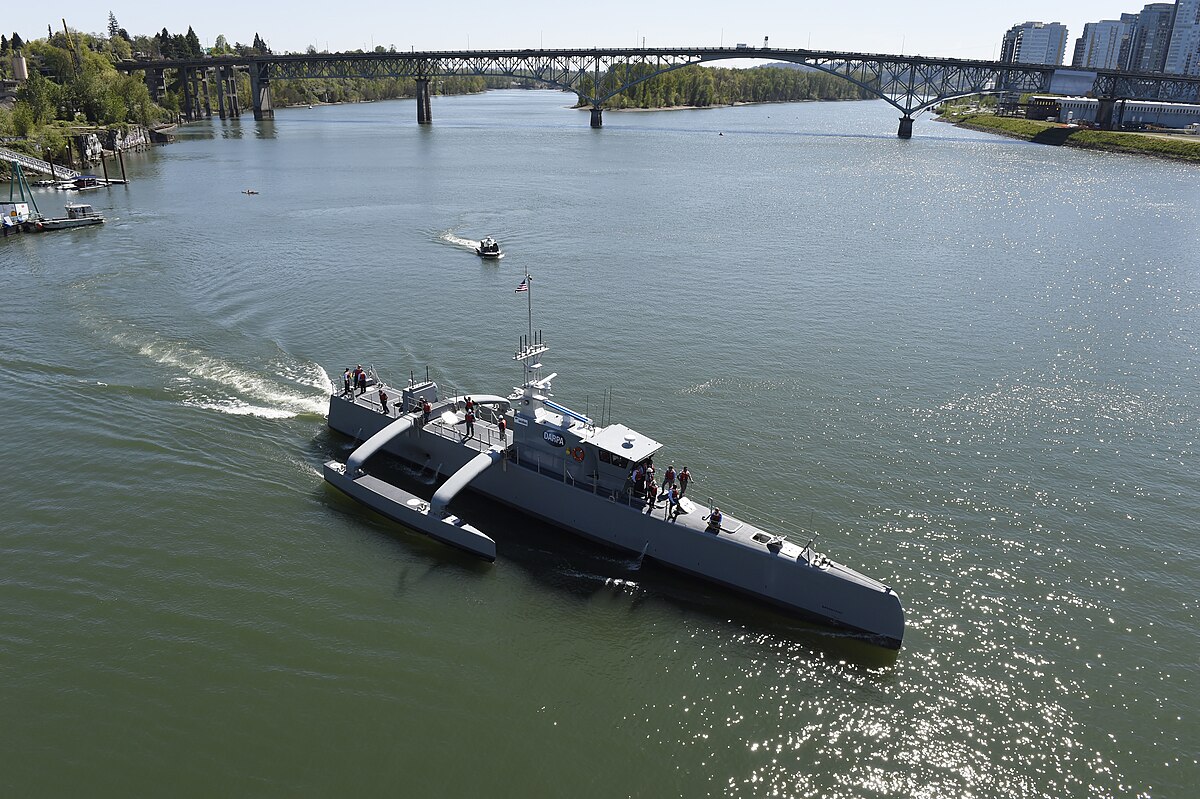A recent edition of The Economist has two articles that make mention of drones. Semi-autonomous vehicles will certainly change things. But, will they change everything that their promoters claim?
One article discusses the use of naval drones. One difficulty that many navies now have is that diesel-electric submarines have become very quiet, meaning that they are able to sneak up on aircraft carriers, for instance. That is a big problem for any navy that relies heavily on aircraft carriers for its work.
Although submarines may be difficult to locate, they are not so hard to track once they are discovered. Relatively cheap drones could be employed to do the job. The US Navy is trying out the Sea Hunter, a 40m automated trimaran for this purpose.

By U.S. Navy photo by John F. Williams.
At a cost of $20m per unit, these marine drones may be cheap enough to employ in sufficient numbers to track many a submarine.
Another article discussed the so-called leap-frog strategy employed by some entrepreneurs in Africa. The basic idea of this strategy is to employ the latest technology, e.g., solar panels and smartphones, in African economic development, without building up old-school tech like roads and power grids.
The strategy is popular with some entrepreneurs because is fits with the prevalent start-up mentality and promises to address some pressing needs.
For example, Zipline is a Silicon Valley start-up that is using drones to deliver blood supplies to remote clinics in Rwanda, where roads are often unavailable. This service promises to reduce fatalities in procedures that require transfusions, such as women with complications in childbirth.
However, as the article points out, it is not clear that such a service is sustainable. Clients for this service do not have much money, meaning that Zipline may quickly go out of business.
In the end, there are some important things that leapfrogging cannot replace:
Drones can transport blood, but they can’t transport doctors, who need roads. Solar panels will help people light their homes without burning kerosene, but they will not replace the functioning grid that manufacturers need. Nor will clever technology firms do away with the need for well-drafted regulation and the rule of law.
Leapfrogging sounds good because it emphasizes innovation, promises to work quickly, and is addressed to some significant problems. Yet, adoption of drones, smartphones, etc. may still depend on old-style infrastructure more than it makes them obsolete.